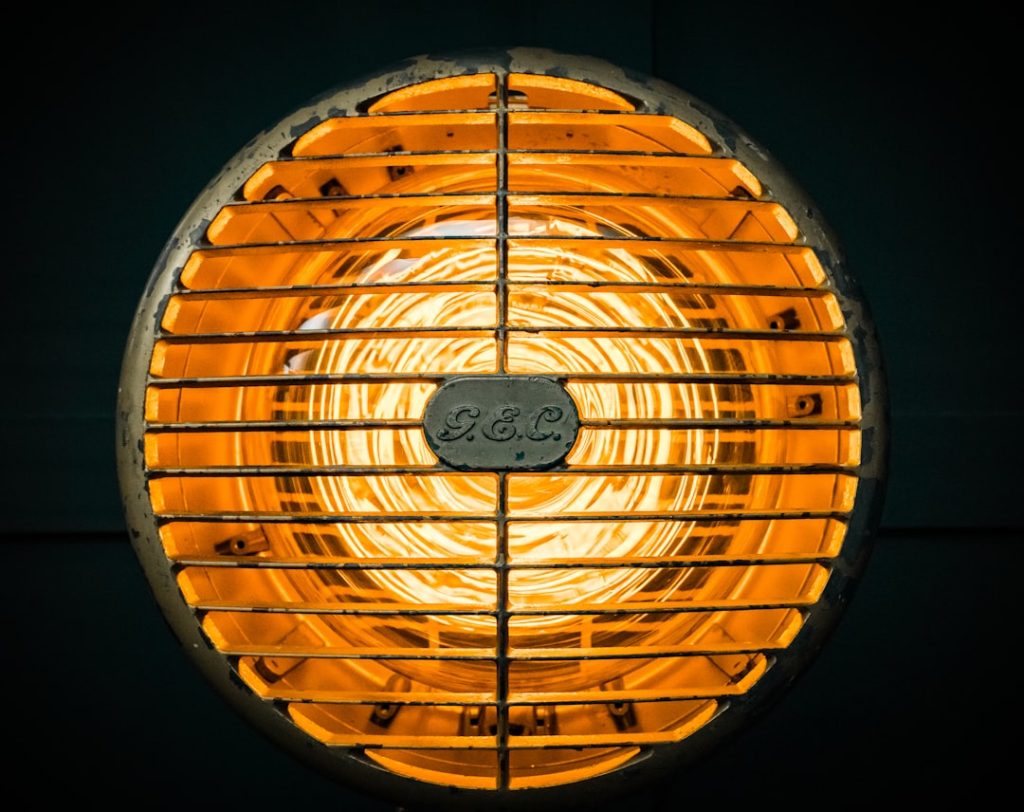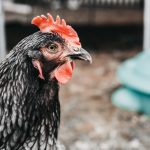In order to provide optimal care for chickens during colder months, it is essential to understand their specific requirements. While chickens are generally hardy birds, they can be vulnerable to cold temperatures without proper shelter and care. Chickens need a warm, dry environment to thrive, which includes a well-insulated coop, reliable heat source, adequate ventilation, and appropriate bedding materials.
Monitoring coop temperature and implementing additional measures when necessary is crucial for maintaining flock health during winter. Chickens are more tolerant of cold than heat, but still require protection from extreme cold and dampness. In cold weather, chickens naturally fluff their feathers to create an insulating air layer.
However, if coop temperatures become too low, chickens may struggle to maintain body heat, potentially leading to health issues such as frostbite and respiratory problems. Different chicken breeds have varying cold tolerance levels. Cold-hardy breeds like Rhode Island Reds and Plymouth Rocks are better adapted to colder temperatures compared to Mediterranean breeds like Leghorns.
Understanding these breed-specific needs allows for tailored winter care strategies to ensure adequate protection for each chicken.
Table of Contents
Key Takeaways
- Understanding the needs of your chickens is crucial for providing proper care and ensuring their well-being.
- Insulating the coop can help regulate the temperature and keep the chickens warm during cold weather.
- Providing a heat source such as a heat lamp or heated pad can be essential for keeping chickens comfortable in low temperatures.
- Ensuring proper ventilation is important to prevent moisture buildup and maintain good air quality inside the coop.
- Using bedding materials like straw or wood shavings can provide insulation and comfort for the chickens while also absorbing moisture.
- Monitoring the temperature regularly is necessary to make adjustments and ensure the coop remains at a suitable temperature for the chickens.
- Implementing additional measures such as adding extra insulation or using a thermostat-controlled heating system may be necessary in extreme cold conditions.
Insulating the coop
Why Insulation is Crucial
Proper insulation is essential to prepare your chickens for the harsh winter months. It helps to retain heat inside the coop, keeping your chickens warm and comfortable even when temperatures outside are freezing.
Insulation Materials and Methods
There are several ways to insulate a chicken coop, including adding insulation to the walls, ceiling, and floor, as well as sealing any drafts or gaps that could let cold air in. Insulation materials such as foam board, fiberglass batts, or reflective insulation can be used to effectively trap heat inside the coop. It’s important to ensure that the insulation materials are non-toxic and safe for chickens, as they may peck at or ingest them.
Additional Insulation through Bedding
In addition to insulating the physical structure of the coop, providing adequate bedding is also an important aspect of insulation. Deep litter bedding, which involves layering straw or wood shavings on the floor of the coop, can provide an additional layer of insulation and warmth for your chickens. The decomposing bedding material generates heat as it breaks down, helping to maintain a comfortable temperature inside the coop.
Benefits of Insulation
Insulating the coop not only helps to keep your chickens warm during the winter months but also reduces heating costs and energy consumption. By taking the time to properly insulate your chicken coop, you can create a cozy and inviting environment for your flock to thrive in even when the weather outside is frightful.
Providing a heat source

Providing a reliable heat source is essential for keeping your chickens warm and healthy during the winter months. While chickens are generally able to tolerate cold temperatures, extreme cold can be detrimental to their health and well-being. A heat source such as a heat lamp or a radiant heater can help to maintain a comfortable temperature inside the coop, preventing issues such as frostbite and respiratory problems.
When choosing a heat source for your chicken coop, it’s important to select one that is safe, reliable, and suitable for use around flammable materials such as straw or wood shavings. In addition to providing a heat source inside the coop, it’s also important to ensure that your chickens have access to warmth outside. This can be achieved by providing them with a sheltered outdoor area where they can bask in the sun on sunny days or seek refuge from cold winds.
A well-designed chicken run with a roof or windbreak can provide protection from the elements while allowing your chickens to enjoy some fresh air and exercise. When providing a heat source for your chickens, it’s important to monitor it regularly to ensure that it is functioning properly and safely. By providing your chickens with a reliable heat source both inside and outside the coop, you can help them stay warm and healthy throughout the winter months.
Ensuring proper ventilation
Proper ventilation is essential for maintaining good air quality inside the chicken coop and preventing issues such as moisture buildup and ammonia accumulation. While it may seem counterintuitive to ventilate a coop during cold weather, adequate ventilation is crucial for preventing respiratory problems and maintaining a healthy environment for your chickens. Proper ventilation helps to remove excess moisture from the air, which can lead to damp bedding and promote the growth of mold and bacteria.
It also helps to remove ammonia fumes from chicken droppings, which can be harmful to both chickens and their caretakers. When ensuring proper ventilation in the chicken coop, it’s important to strike a balance between allowing fresh air to circulate while preventing drafts that could chill your chickens. This can be achieved by installing adjustable vents or windows that can be opened or closed as needed to regulate airflow.
It’s also important to ensure that vents are positioned high up in the coop to prevent cold drafts from reaching ground level where your chickens roost. Additionally, providing adequate insulation and sealing any drafts or gaps in the coop can help to maintain a comfortable temperature while still allowing for proper ventilation. By ensuring proper ventilation in the chicken coop, you can create a healthy and comfortable environment for your flock to thrive in throughout the winter months.
Using bedding materials
Using suitable bedding materials is an important aspect of winter care for chickens. Bedding serves several purposes, including providing insulation, absorbing moisture, and creating a comfortable surface for your chickens to walk and roost on. During the winter months, it’s important to use bedding materials that are able to retain heat and absorb moisture effectively.
Common bedding materials for chicken coops include straw, wood shavings, shredded paper, and hemp bedding. Deep litter bedding is a popular method of bedding management for chicken coops during the winter months. This involves adding a thick layer of bedding material to the floor of the coop and allowing it to build up over time as new bedding is added on top of old bedding.
As the bedding material decomposes, it generates heat which helps to maintain a comfortable temperature inside the coop. Deep litter bedding also helps to absorb moisture from droppings and spills, reducing the risk of dampness and mold growth. Regularly turning over the bedding and adding fresh material as needed can help to maintain a clean and comfortable environment for your chickens throughout the winter months.
Monitoring the temperature

Temperature Range for Chicken Comfort
The ideal temperature for most chicken breeds is between 45-65 degrees Fahrenheit (7-18 degrees Celsius). Temperatures below this range can lead to issues such as frostbite and respiratory problems, while temperatures above this range can cause discomfort and stress for your chickens.
Key Areas to Monitor
In addition to monitoring the overall temperature inside the coop, it’s also important to pay attention to specific areas where your chickens roost or spend most of their time. These areas should be free from drafts and moisture buildup, as these can contribute to cold stress and health issues for your flock.
Maintaining a Healthy Environment
By monitoring the temperature inside the chicken coop regularly and making adjustments as needed, you can ensure that your chickens remain warm and comfortable throughout the winter months.
Implementing additional measures
In addition to insulating the coop, providing a heat source, ensuring proper ventilation, using suitable bedding materials, and monitoring the temperature, there are several additional measures that can be implemented to help keep your chickens warm and healthy during the winter months. These measures include providing access to fresh water at all times by using heated waterers or regularly replacing frozen water with warm water several times a day. It’s also important to provide your chickens with a balanced diet that includes plenty of high-energy foods such as grains and seeds to help them maintain their body heat during cold weather.
Another important measure is protecting your chickens from predators during the winter months when food sources may be scarce. This can be achieved by reinforcing coop security measures such as adding locks or predator-proofing fencing around outdoor areas where your chickens roam. Additionally, providing entertainment such as hanging treats or toys inside the coop can help keep your chickens active and engaged during long periods of confinement due to inclement weather.
Finally, it’s important to observe your flock regularly for signs of cold stress or illness during the winter months. This includes checking for symptoms such as lethargy, decreased egg production, pale combs and wattles, or signs of respiratory distress. By implementing these additional measures and staying vigilant about your flock’s well-being, you can help ensure that your chickens remain healthy and happy throughout the winter months.
In conclusion, understanding the specific needs of your chickens during the winter months is crucial for providing them with proper care and ensuring their health and well-being. By insulating the coop, providing a reliable heat source, ensuring proper ventilation, using suitable bedding materials, monitoring the temperature, and implementing additional measures when necessary, you can create a warm and comfortable environment for your flock to thrive in even when temperatures outside are freezing. With careful planning and attention to detail, you can help your chickens stay warm and healthy throughout the winter months, allowing them to continue laying eggs and enjoying their natural behaviors despite the challenges of cold weather.
If you’re looking for more information on keeping your poultry warm at night, you may also be interested in learning about what to feed your ducks. Check out this article for tips on providing the right nutrition for your ducks.
FAQs
What are the best ways to keep chickens warm at night?
Some of the best ways to keep chickens warm at night include providing a well-insulated coop, using heat lamps or heated pads, and ensuring good ventilation while avoiding drafts.
What temperature is too cold for chickens?
Chickens can generally tolerate cold temperatures, but they may start to experience discomfort and health issues if the temperature drops below 0°F (-18°C). It’s important to monitor their behavior and provide additional warmth if necessary.
How can I insulate my chicken coop?
You can insulate your chicken coop by using materials such as straw, hay, or wood shavings on the floor, adding insulation to the walls and ceiling, and sealing any drafts or gaps. It’s important to ensure proper ventilation while insulating to prevent moisture buildup.
Are heat lamps safe for chickens?
Heat lamps can be safe for chickens if used properly. It’s important to secure the heat lamp to prevent fires, keep it away from flammable materials, and provide a way for chickens to move away from the heat if they become too warm.
What are some signs that my chickens are too cold?
Signs that your chickens may be too cold include huddling together for warmth, decreased egg production, lethargy, and shivering. It’s important to address any signs of discomfort promptly to ensure the health and well-being of your chickens.
Meet Walter, the feathered-friend fanatic of Florida! Nestled in the sunshine state, Walter struts through life with his feathered companions, clucking his way to happiness. With a coop that’s fancier than a five-star hotel, he’s the Don Juan of the chicken world. When he’s not teaching his hens to do the cha-cha, you’ll find him in a heated debate with his prized rooster, Sir Clucks-a-Lot. Walter’s poultry passion is no yolk; he’s the sunny-side-up guy you never knew you needed in your flock of friends!







